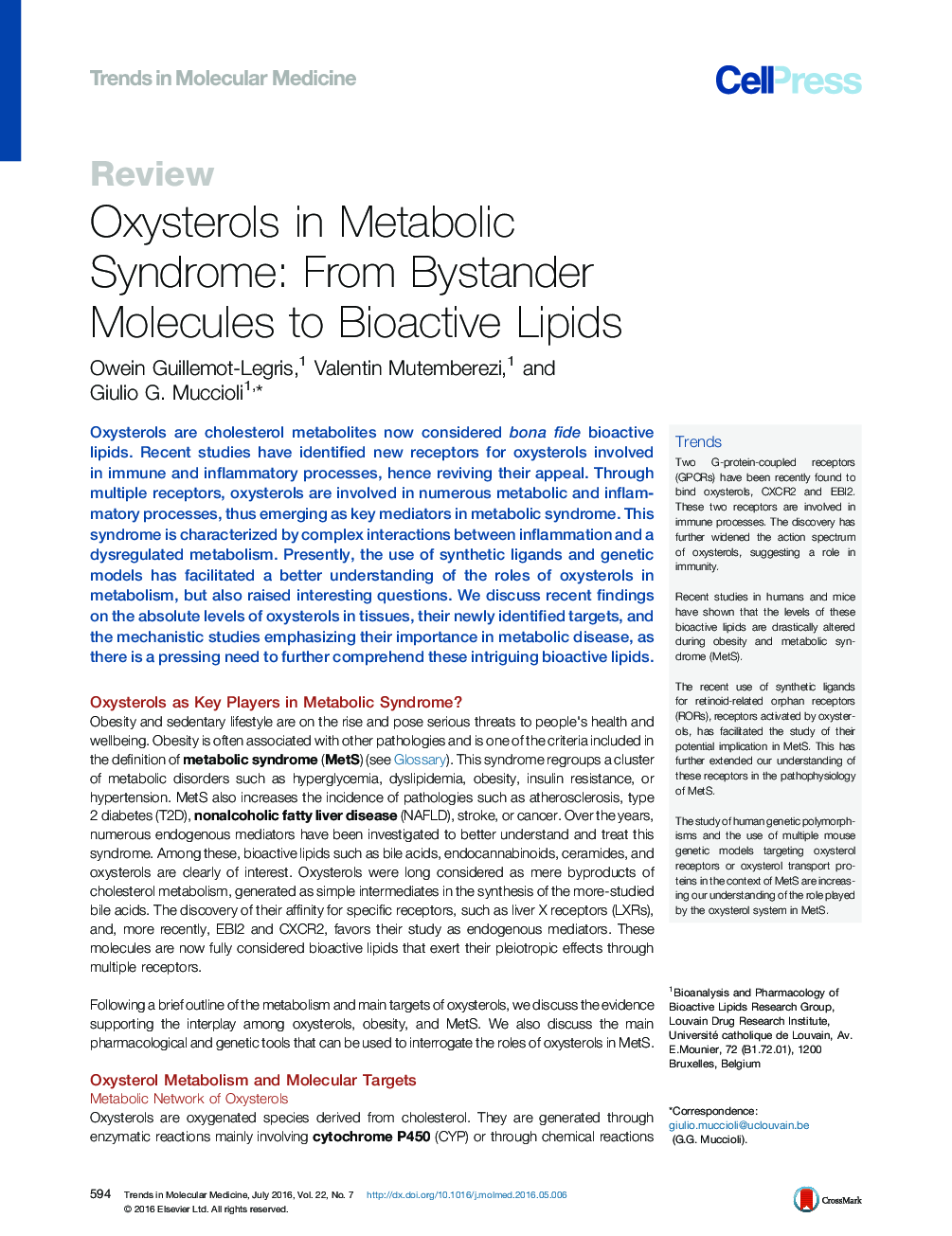| کد مقاله | کد نشریه | سال انتشار | مقاله انگلیسی | نسخه تمام متن |
|---|---|---|---|---|
| 2838315 | 1165000 | 2016 | 21 صفحه PDF | دانلود رایگان |
Oxysterols are cholesterol metabolites now considered bona fide bioactive lipids. Recent studies have identified new receptors for oxysterols involved in immune and inflammatory processes, hence reviving their appeal. Through multiple receptors, oxysterols are involved in numerous metabolic and inflammatory processes, thus emerging as key mediators in metabolic syndrome. This syndrome is characterized by complex interactions between inflammation and a dysregulated metabolism. Presently, the use of synthetic ligands and genetic models has facilitated a better understanding of the roles of oxysterols in metabolism, but also raised interesting questions. We discuss recent findings on the absolute levels of oxysterols in tissues, their newly identified targets, and the mechanistic studies emphasizing their importance in metabolic disease, as there is a pressing need to further comprehend these intriguing bioactive lipids.
TrendsTwo G-protein-coupled receptors (GPCRs) have been recently found to bind oxysterols, CXCR2 and EBI2. These two receptors are involved in immune processes. The discovery has further widened the action spectrum of oxysterols, suggesting a role in immunity.Recent studies in humans and mice have shown that the levels of these bioactive lipids are drastically altered during obesity and metabolic syndrome (MetS).The recent use of synthetic ligands for retinoid-related orphan receptors (RORs), receptors activated by oxysterols, has facilitated the study of their potential implication in MetS. This has further extended our understanding of these receptors in the pathophysiology of MetS.The study of human genetic polymorphisms and the use of multiple mouse genetic models targeting oxysterol receptors or oxysterol transport proteins in the context of MetS are increasing our understanding of the role played by the oxysterol system in MetS.
Journal: - Volume 22, Issue 7, July 2016, Pages 594–614
